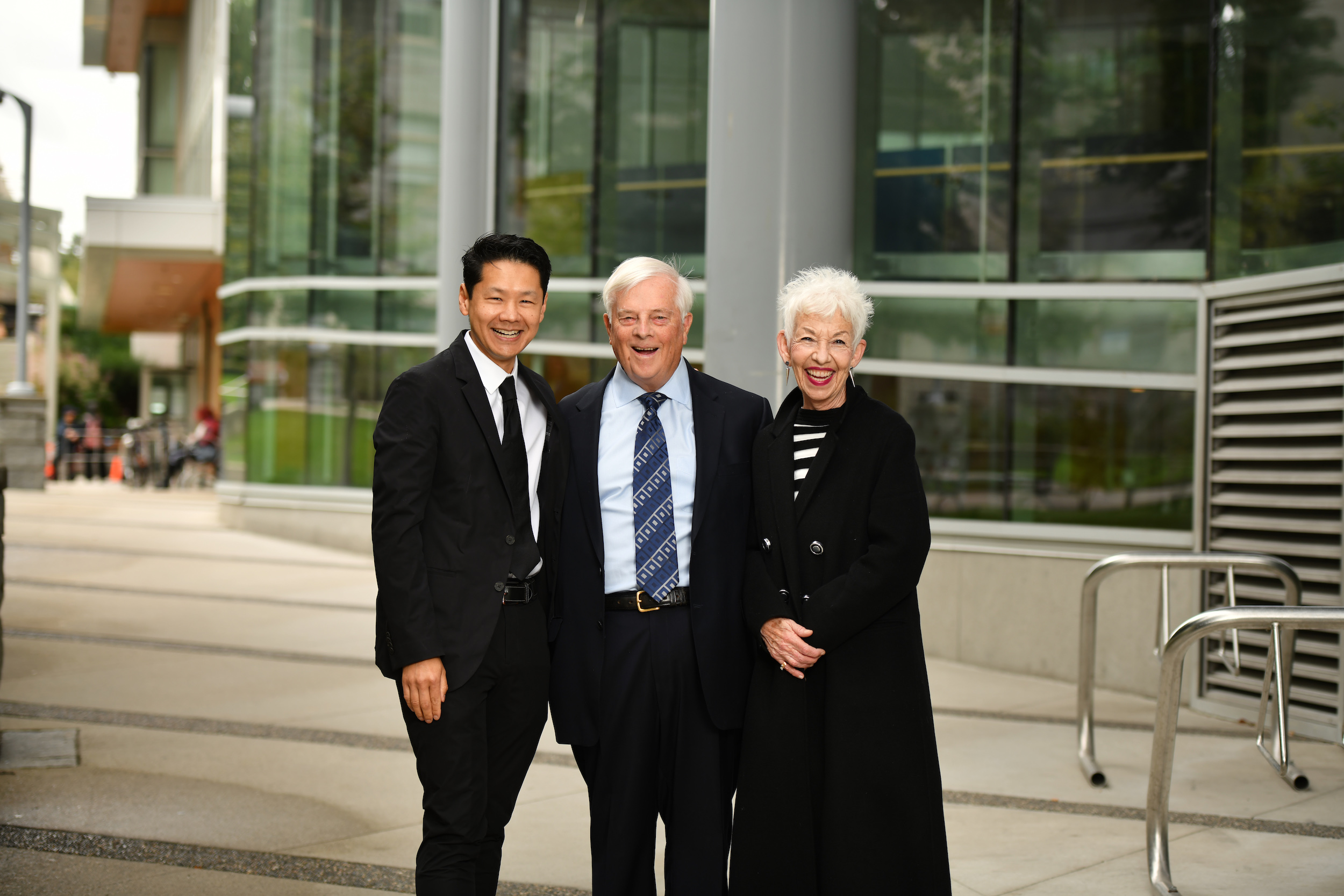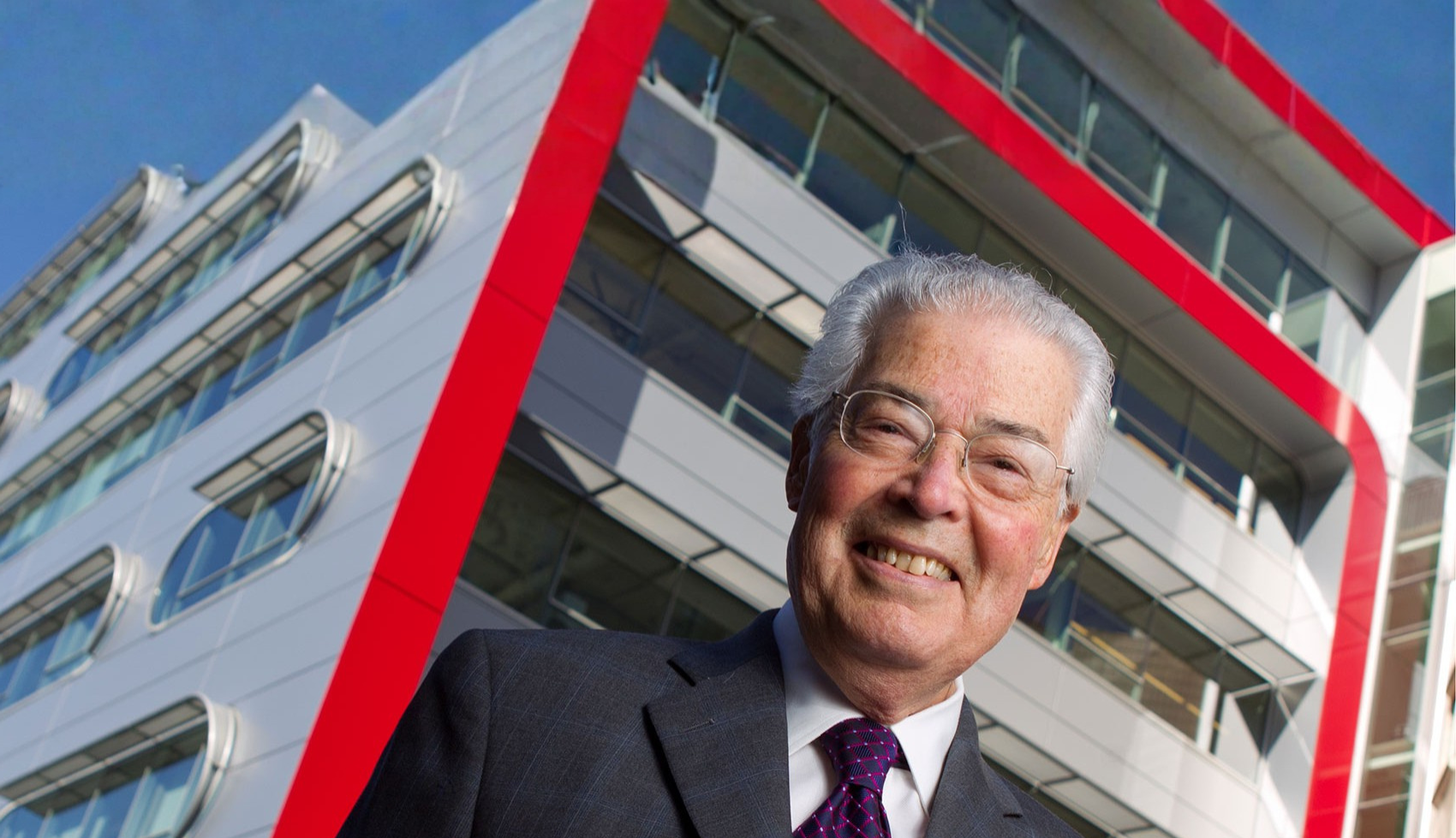For more than five decades, Bob Saunders has been selling and developing real estate in Vancouver. Bob has played a role in the growth of many industrial areas in Greater Vancouver including the very early development of Gastown alongside four partners.
Yet his impact on some of the most beloved areas in the city may never have happened at all without the help and support of the medical experts at VGH and the Stone Centre at VGH.
Expert research leads to expert care
In 2011, Bob arrived at VGH to treat his kidney failure, followed by a procedure to remove kidney stones by Dr. Ben Chew, Director of Clinical Research at the Stone Centre at VGH. The care he received inspired Bob to donate in total more than $3 million back to the program which delivered his world-class treatment.
Led by Dr. Chew and Dirk Lange (PhD), the Stone Centre is the only one of its kind in Canada and one of only a handful of similar centres in the world dedicated to cutting edge research to revolutionize care for the 1 in 10 people who experience kidney stone disease in their lifetime.
The Stone Centre places basic scientists and clinicians side-by-side to ensure that research results from the laboratory are brought to the bedside to improve patient care. This centre has global recognition and is highly sought after by medical companies, world class trainees aiming to become clinician scientists, and a destination for pre-clinical and first-in-human studies for new treatment options. This enables BC patients to be among the first to benefit from promising cutting-edge treatment and preventative options through the expertise available at the Stone Centre.
Three innovations, developed at the Stone Centre, aim to reduce health care costs and improve patient care:
Biodegradable urinary stents: This type of ureteral stent dissolves over time and can reduce follow-up procedures while improving patient comfort. The first-in-the world use of this stent was performed at VGH.
Breakwave stone removal: This new type of ultrasonic energy breaks up kidney stones with non-invasive treatments using a handheld probe to treat kidney stones in a doctors’ office or Emergency Department without requiring an anesthetic, thus helping patients avoid surgery, while relieving pain.
New ureteroscopes: In a world first, VGH has worked with a partner to develop a new ureteroscope that will allow clinicians to treat kidney stones while also measuring pressure inside the kidney while doing the operation. This will become the new standard in all ureteroscopes in the future, as increased kidney pressure during surgery has been linked to increased pain and infections following the operation. This new ureteroscope was designed to minimize those risks.
Bob’s generous donation invests in both people and infrastructure so that the team here continues to make innovations like these possible. It empowers our world-class urology team to stay on the cutting edge of their craft by recruiting, teaching, inspiring and propelling the future leaders of urological sciences and care.
Investments for the future
Bob knows better than most how investment today pays off for future generations. This philosophy has guided his choices in his successful career, and today has led to extraordinary and transformative gifts in health care.
To date, the Saunders have donated more than $5M in support of various causes at VGH, including Dr. Chew and the Stone Centre, Dr. Street at the Blusson Spinal Cord Centre, and the renal program headed by Dr. Nadia Zalunardo.
“It was time,” Saunders says. “It’s better to give now than when it’s too late.”
These gifts are empowering the clinician-scientists in urology to improve care to BC patients in areas including prostate cancer, kidney and bladder cancer, kidney stones, bladder and pelvic health, kidney transplant, sexual and reproductive health and adolescent transitional urology.
“Through these gifts, we are able to conduct vital research to help improve the treatment and care available for those suffering from kidney stones,” says Dr. Chew. “We’re looking into some very exciting areas now, including the connection between the intestinal microbiome—health bacteria—as it relates to kidney stones.”
Giving what he can
Despite all he has generously given so far, Saunders vows to give more—as long as he can.
“When you’ve been in the hospital as many times as I have, you appreciate the care you get from these outstanding doctors, the nurses, the facilities,” says Bob. “They’re just phenomenal—and you want to make them better so they can save other people too.”
Learn more about how together, we are transforming urologic care.
Share this:



